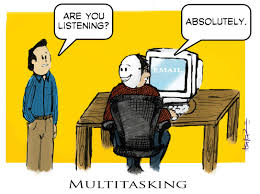Home » Parenting
Category Archives: Parenting
Talking About Race: Part Two
I know that the idea of talking about race with your kids – for many parents – can be about as scary and uncertain a territory as talking about where babies come from (if not more so). Many parents are concerned, and rightly so, that to talk about race with kids is to risk the unintended implanting or reinforcing of stereotypes and issues that they themselves carry. We discussed this in some part in our previous post, “Talking About Race: Part One.” Whatever the reason, there’s no way to escape the fact that – thanks to the current state of our country, laws, and systems – race is a significant part of our culture, and ignoring it or pretending it doesn’t exist won’t make things better; it’ll only leave our kids unprepared.
Recently, I went to hear Ta-Nehisi Coates – a writer, activist, and Atlantic senior editor – speak on “The Case for Reparations” at Loyola University in Baltimore. And while I learned many fascinating and deeply important things regarding the issue of reparations (you can read his article on this topic by clicking here), what I’d like to share with you is this (paraphrasing): If you want to consider yourself a part of a community or family – e.g. an American – then you can’t simply come out on holidays and celebrate everything the community’s done well. You have to embrace the burdens of your community, the problems and debts it owes, along with the benefits and victories.
In other words, part of being an American now is understanding what America has done well as well as what crimes it’s committed/committing. Being thoughtful, critical, and honest about our country as it is and as it has been isn’t being unpatriotic or un-American – it’s being constructive; it’s being useful; it’s being the voice of real love in the family when the family’s in trouble. We can’t sweep race and its many related issues under our collective rug. We can’t come out on MLK Day and celebrate Dr. King’s legacy only to then dishonor and stomp all over it by pretending that the struggles are over and done with.
I know that race is a contentious topic for many people, but that’s why it’s so vital that we continue to educate ourselves and talk with our kids about it. In addition to the tips we mentioned in Part One, here are a few other ideas to consider:
- Make it clear that the celebration and importance of learning about Black History doesn’t end on March 1st. Learning about new cultures and peoples different from ourselves—no matter our race, religion, gender, or background—is important all year round.
- Experiment with reading new voices (both alone and with your kids) like Ta-Nehisi Coates, Toni Morrison, and Clarissa Pinkola Estés
- Try talking with your kids’ teachers to see how the school is handling (or not handling) the subject of race
- Try blog-surfing with your kids to find and read works from other young people (and maybe even kids their own age) related to the subject of race (make sure the blogs are critical and thoughtful, though, and not just spouting negative, prejudicial nonsense). This can show your kids that they can be a part of the conversation as well, that they can have some power and speak up for what’s right. As a starting place, try out the Nerds of Color blog:
Helping Your Kids Handle the Boogeyman: Anxiety
When I was a kid in middle school, I got some of my first experiences with the monsters Anxiety and Depression—and I got them close-up and personal, as my younger brother began showing symptoms of the latter. Anxiety and depression can often be difficult things to recognize (many kids go without necessary medications because of lack of medical care/diagnosis while others become over-medicated and over-diagnosed), as they are often disguised by or confused for things like anger, defiance, lack of confidence, mischief, and shyness. As Holly Robinson explains for Parents Magazine,
I know that, for my brother, his depression often reared its head in anger, in bursts of fathomless aggravation, temper, and self-loathing. —Things his teachers often misunderstood, things that often left him feeling isolated from others kids at school, things that I rarely understood myself as a kid; and all of these only worked to exacerbate his fears and symptoms. Fortunately for us, our mother was proactive, able to do her research, get us out of schools with willfully ignorant teachers, and get us all the help we needed.
In Jane E. Brody’s “Helping Children Gain Control Over an Anxiety Disorder” (New York Times), she references Dr. Golda S. Ginsburg, a Johns Hopkins University expert in childhood anxiety, saying, “childhood anxiety disorders typically result from an interaction between biology and environment. For some … there is [also] a strong hereditary component” (qtd. in Brody). What’s more, parenting styles and behavior can also have an impact, perhaps especially in cases of “parents who are overprotective or overly controlling, who constantly identify dangers in the child’s world” (Ginsburg in Brody).
Similarly, psychotherapist Tamar E. Chansky suggests that, for parents trying to help their children deal with anxiety issues, the goal should not be “to put down children’s fears but to help them see that their fears are unwarranted and that they can overcome them” (qtd. in Brody). Brody outlines some of Chanksy’s “‘master plan’” for helping kids deal with anxiety:
The key takeaway? Don’t blame your child or yourself for their anxiety and/or depression. These are boogeymen that feed on things like blame, stress, and insecurities. Be sure to talk with your children openly, your doctor, as well as your partner and friends—you can’t help your children handle their anxieties, depression, and so forth if you aren’t getting the help you need to handle it all as well.
Further Readings:
- Holly Robinson, Parents Magazine, “Worried Sick: Dealing with Anxiety in Children”
- Jane E. Brody, New York Times, “When Anxiety Interrupts a Child’s Life”
The Changing Face of Higher Ed
Recently, The Atlantic published Derek Newton’s “Higher Education Is Not a Mixtape,” in which he argues that – contrary to many popular arguments and articles – higher education is not going the way of the music industry (i.e. people won’t begin shopping for individual professors instead of for universities the way they now shop for individual songs instead of for entire albums). Along the way, Newton makes some compelling points:
Though many universities have not done a great job of keeping up with technological advancements or at keeping costs down, many of the people making arguments for the tech future of higher ed are also personally and financially invested in the companies and technologies necessary to make this future possible. Moreover, the arguments for increased technology and the “unbundling” of higher ed also seem to be missing a basic truth: Unlike music – which listeners buy because of the artist, not the artist’s record label – students “shop for schools, not professors” knowing that their future career success is often tied, at least initially and in part, to the reputation of their university.
However, a simple (and obvious) response to many of Newton’s arguments is: Yes…for now.
As a more recent graduate of an MA program, I well remember just what “distance learning” and “online learning” courses can look like – and it wasn’t pretty. This gets back to Newton’s concession that many schools and degree programs haven’t done a great job of keeping up with the technological times, so that if they do offer online courses and learning opportunities, many of them aren’t yet all that they could be (which means that many students either elect not to use them or view them as a last resort). But this isn’t something that’s likely to last for much longer, and improved distance learning tech could very well lead to an “unbundling” of universities, to a marketplace for professors and courses over entire schools.
Given the constraints of rising tuition rates coupled with the increased number of non-traditional students (e.g. middle-aged and older adults coming back to school for degrees, training, certifications, and so forth), online learning opportunities and distance courses are likely to only increase in number and quality over the next few years. These increases will undoubtedly change the way people view online opportunities and, in turn, how they shop within the industry of higher education generally.
What’s more, many institutions, like Ft. Worth’s TCU for example, now offer comparatively cheap, non-degree opportunities (both online and in-person) to students (traditional and non-traditional alike) who are interested in auditing particular courses rather than in pursuing a full degree. This trend may be evidence that certain demographics are in fact interested in shopping for higher ed opportunities on a professor or course-basis rather than on a university-basis, similar to the trend of buying a $0.99 song rather than a full album.
In my opinion, Newton throws his best possible argument for the traditional college experience under the bus by only barely mentioning it in his final paragraph:
As a liberal arts student myself with three degrees, including English and American Studies, I appreciate better than most the difficulties and benefits of pursuing an education that doesn’t directly lead to an obvious, lucrative career path. And there certainly are difficulties – jokes bashing the putative usefulness or wisdom of liberal arts degrees are classic and many professors within these fields do an amazingly poor job of discussing with students just how many career opportunities are (or will be, could be) available to them. Thus, many students either prematurely cross liberal arts programs off their list or graduate from them without a full appreciation of just how flexible and useful they can truly be.
To me, the bashing or general rejection of liberal arts degrees only shows a lack of creativity on part of all involved. A degree in English, after all, doesn’t limit a person to Writer, Teacher, or Unemployed. As Walt Whitman once wrote, “I am Large. I contain Multitudes.” There is more to a student than their degree just as there is more to a degree than its acronym. Education, like life, will – in large part – be what you make of it. Similarly, there are more jobs out there, more possibilities and opportunities than you can ever account for, because they – like the higher ed industry itself – are always changing. And that’s part of what a liberal arts degree is great for: teaching students how to think (for more on this particular point, see David Foster Wallace’s 2005 Kenyon College commencement speech) and how to grow with changing times.
Ultimately, I think the future of higher ed falls somewhere in the middle here, in a combination of distance/online and in-person learning, of professor-shopping and university-shopping. As our student bodies change and grow more diverse, so must our learning opportunities. This isn’t a time to throw away all we’ve built in higher ed, but neither is it a time to try stalling change and growth.
*For those who’re interested, here’s the audio of Wallace’s speech:
Further & Related Readings:
- Marisa & John Bowe (editors), Gig: Americans Talk About Their Jobs (2009) – ***This book is an amazing resource for getting started thinking about all the different kinds of jobs, careers, and work opportunities out there today
- Derek Newton, “Higher Ed is Not a Mixtape,” The Atlantic (January 2015)
- The Project on Student Debt, “Student Debt and the Class of 2012” (December 2013)
- Martin Smith, “What universities have in common with record labels,” Quartz (July 2014)
- Errol Craig Sull, “Student Engagement in the Online Classroom,” The Chronicle of Higher Education (January 2013)
- Kelly Field, “Obama Presses for Free Community College and Tax Reform,” The Chronicle of Higher Education (January 2015)
News Update: Sexism in the Classroom
This past February, Danielle Kurtzleben’s article, “Grade-school teachers can push girls away from math, with huge consequences,” appeared in Vox, speaking to some very important and, tragically, very widespread misconceptions regarding the gender “math gap” in education. According to Kurtzleben:
“A new working paper from the National Bureau of Economic Research suggests that something else might be at work here shaping the supposed ‘choices’ girls and women make. It shows that young girls’ teachers have biases that push girls away from math and science early on, which could be influencing where they go later in life.
Economists Victor Lavy from the University of Warwick in the United Kingdom and Edith Sand from Israel’s Tel Aviv University looked at Tel Aviv sixth graders’ test scores both on standardized tests and internal tests in Hebrew, English, and math.”
In this research, Lavy and Sand tested to see if there was any difference in test scores if the ones responsible for grading the tests knew or did not know the test-takers’ gender. Their results clearly suggest the existence of a “systematic bias against girls in the marking of math exams.” And as Lavy and Sand followed their sixth-graders through the eighth grade and high school, they found that “those early teacher biases led to significant improvements on the later math exams for boys and negative and significant effects in math for girls.”
Of course, as Kurtzleben also points out, “this is a working paper, meaning its results are preliminary, and it studied students in a different culture and school system, so we can’t assume US students would see the exact same magnitudes of effects” (emphasis added). However, what’s most important about this research now, as Kurtzleben explains, is that it shows how powerfully “socialization takes hold early on” as well as showcases
“the power of biases — discourage a child from pursuing a subject, and she will, years later, later perform worse on that subject (encourage her, meanwhile, and she’ll do better). So when you discourage a whole swath of the population from pursuing high-paying fields, all those people will be much more likely to have lower-paying jobs.”
What does this mean for us in the here and now? What does it mean for us as parents, teachers, and/or fellow students? It means constantly interrogating ourselves and our assumptions. It means asking ourselves hard questions before we hand back that test or agree with our daughters that Yeah, math really is boring or Yeah, math is super hard, when we might be telling our sons, Yeah, but you can do it or Yeah, but you want to be a marine biologist one day, don’t you? The insidious evil of sexism is that you can sometimes be adding to the problem and perpetuating old sins without ever realizing it or meaning to.
This is a trend and social failing that should both greatly concern and anger you, for your sake as well as for the rest of the world’s. After all, as Kurtzleben so well explains:
“This isn’t just a problem for women; it’s a problem for society. This study suggests that girls were just as capable as boys at math at the start of the observation period, but they were slowly pushed away from math. To diminish an entire demographic’s talent at once is to squander their potential productivity, and economic growth.”
If we want to one day live in a better, more just, more equitable, and more peaceful world, then there’s really no better or easier place to start than right at home with the editing, improving, and monitoring of our own attitudes, perspectives, and actions. The hard truth is, we will only have justice and equality for all when we begin treating others justly and equitably.
All quotes and facts here were drawn from Danielle Kurtzleben’s Vox article, “Grade-school teachers can push girls away from math, with huge consequences.”
Is Multitasking Bad for the Brain?
Thank you to St. John’s for this great article on the potential negatives of multitasking. Multitasking is a great villain in many of our working, studying, and learning lives because it drapes itself in a cloak of usefulness, of productivity, when in fact it creates just the opposite: lowered efficiency, less productivity, poorer quality of work, and so on.
NPR has also recently come out with an article related to this issue: “We’re Not Taking Enough Lunch Breaks. Why That’s Bad For Business.” According to “We’re Not Taking…,” the pressure to not only multitask but to constantly be on-hand and on-the-clock is leading us as employees (and likely as students as well) to work longer yet less effective and less creative hours.

Just a brief stroll around the block could give you that boost of energy and creativity you need to finish the day strongly.
This might not seem to affect students quite as much given that elementary, middle, and high school students all have mandatory lunch breaks, but if you think your example of constantly being on the clock, of using lunchtime, dinnertime, breakfast time (all the time) as work time isn’t being seen and absorbed by your children, then you’re sorely mistaken.
As parents and teachers, we are the ones who lay the groundwork for our children; we’re the ones creating the rules and norms to be inherited by our young thinkers and students. So, if not for the sake of your own health and creativity, take a break for the sake of your kids’–take a break for the sake of their future, for your own happiness as well as theirs.
With the internet in our pockets these days, multitasking seems to be at an all-time high. I’m a big multitasker myself, especially when I’m at home. After work, I move a million miles a minute: washing dishes, packing breakfast and lunch for the next day, prepping dinner, and picking up around the house – all while checking email each time my phone beeps. I race through these tasks, often dropping food on the floor, and I wonder if doing so many things at once is helping me be any more efficient?
 According to countless research studies, it’s true that multitasking decreases your quality of work and slows you down. For example, writing an email and talking on the phone both use the same part of the brain. So, these competing tasks decrease the brain’s efficiency; you would be better off hanging up the phone and then taking the extra time…
According to countless research studies, it’s true that multitasking decreases your quality of work and slows you down. For example, writing an email and talking on the phone both use the same part of the brain. So, these competing tasks decrease the brain’s efficiency; you would be better off hanging up the phone and then taking the extra time…
View original post 226 more words
Rule-breaking Female Characters
Admittedly, I was a little unsure of what I would write about when Nathalie suggested this for our theme this week. I sat at the desk in our basement office, hoping for inspiration but instead re-arranged the pens in their various glass holders and stared at the blank wall in front of me trying to decide which would be a better fit: a mirror or an oversized framed print.
When I am stressed or anxious I like to lose myself among my shelves of books. In comparison to most serious book lovers, say for instance Nathalie, my collection is modest but I find something soothing about running my fingers along the spines of books, some of which have been with me for nearly two decades.
In an effort to procrastinate, I pulled my favourite chapter books from my girlhood and arranged them on the floor at the foot of my…
View original post 783 more words




 While these symptoms may sound obvious enough, they can actually be kept well-hidden by students (and often are) due to feelings of immense shame, fear, depression, and/or isolation. In order to detect and identify these symptoms, it is of paramount importance that teachers strive to develop a healthy rapport with their students, their students’ parents, and their fellow teachers. Without these clear lines and opportunities for honest communication, we won’t be able to recognize what’s normal for any given child and thus won’t be able to recognize significant changes (aka possible warning signs) either.
While these symptoms may sound obvious enough, they can actually be kept well-hidden by students (and often are) due to feelings of immense shame, fear, depression, and/or isolation. In order to detect and identify these symptoms, it is of paramount importance that teachers strive to develop a healthy rapport with their students, their students’ parents, and their fellow teachers. Without these clear lines and opportunities for honest communication, we won’t be able to recognize what’s normal for any given child and thus won’t be able to recognize significant changes (aka possible warning signs) either.







